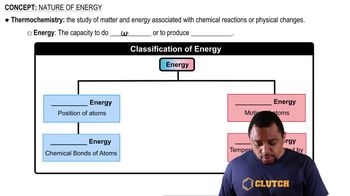Which of the following molecules will produce the most ATP per mole?
d. lauric acid (C12) or palmitic acid (C16)
 Verified step by step guidance
Verified step by step guidance Verified video answer for a similar problem:
Verified video answer for a similar problem:



 3:8m
3:8mMaster Total Energy from Fatty Acids Concept 1 with a bite sized video explanation from Jules
Start learning